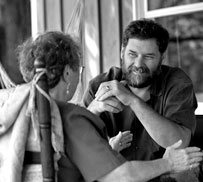![]()
Search
Recent Posts
- ChangingAging.org Redesign -- Please Bookmark!
- Disaster in Buffalo
- Power Up Friday
- Blanchard WinsDays
- Kevin Frick writes...
- Monkhouse Monday
- Getting Closer!
- Blanchard WinsDays
- Power Up Friday
- My Pick for Health and Human Services
- Understanding Health Care Reform
- Facts Are Stubborn Things: Social Security Edition
- Monkhouse Monday
- Localism is Coming
- Krugman Can't Wait...
Recent Comments
Category Archives
- AGING 100
- Aging
- Culture
- Dementia
- Eden Alternative
- Erickson School
- Green House
- Health Policy
- Longevity
- Media
- Rockets
Monthly Archives
- February 2009
- January 2009
- December 2008
- November 2008
- October 2008
- September 2008
- August 2008
- July 2008
- June 2008
- May 2008
- April 2008
- March 2008
- February 2008
- January 2008
- December 2007
- November 2007
- October 2007
- September 2007
- August 2007
 Subscribe to this blog's feed
Subscribe to this blog's feed
Announcements

Blog Data
« Dining In | Main | Tabassum Live Blogs! »
October 30, 2008 |Permalink |Comments (0)
Did Eskimos put Elders on ice floes to die?
Get the straight dope from the Straight Dope...
...it bugs me when questions about strange Eskimo customs are phrased in the present tense, as if nothing could have changed since the eighteenth century. But yes, in the past some Eskimos did kill old people when circumstances were sufficiently desperate. Pressure from missionaries and national authorities, improving economic conditions, and no doubt evolving notions of acceptable behavior among native peoples eventually brought an end to the practice. The last reported case was in 1939, but the custom was a rarity long before that. In any case, the common perception of taking Granny out to the nearest ice floe and setting her adrift is wrong. I can't prove it never happened, but it wasn't the usual method.Senilicide (the killing of old people) was never universal among Eskimos. It was common in some parts of their range but more so among the Inuit (Greenland to Northern Alaska) than the Yuit (western and southwestern Alaska). Even among the Inuit, some groups found the custom repugnant.
Where it was practiced, senilicide was rare except during famines. As long as there was enough food to go around, everyone got their share, including the relatively unproductive. Given that the usual diet consisted of fairly dependable catches of caribou, fish, and sea mammals, many years could pass between episodes of scarcity. Considering the dangers of hunting, the old and infirm who weren't expected to hunt could outlive a hunter in his prime.
On the other hand, when food did run short, the old and sick were looked upon as drains on the community's resources. Sometimes they were killed - thrown into the sea, buried alive, locked out in the cold, or starved to death. Far more commonly they were simply abandoned to die. The victim might be taken out in the wilderness and left there, or the whole village might pick up and move away while the old person slept. If the villagers were unexpectedly restored to prosperity, they might go back to rescue those left behind. An abandoned person would also be welcomed back as a full member of the community if he could manage to make his way back to the village on his own. But usually he couldn't.
Now for another pressing question...
Do Europeans cause rat-borne plagues by killing cats? After all, everyone knows that cats are demon spawn!














